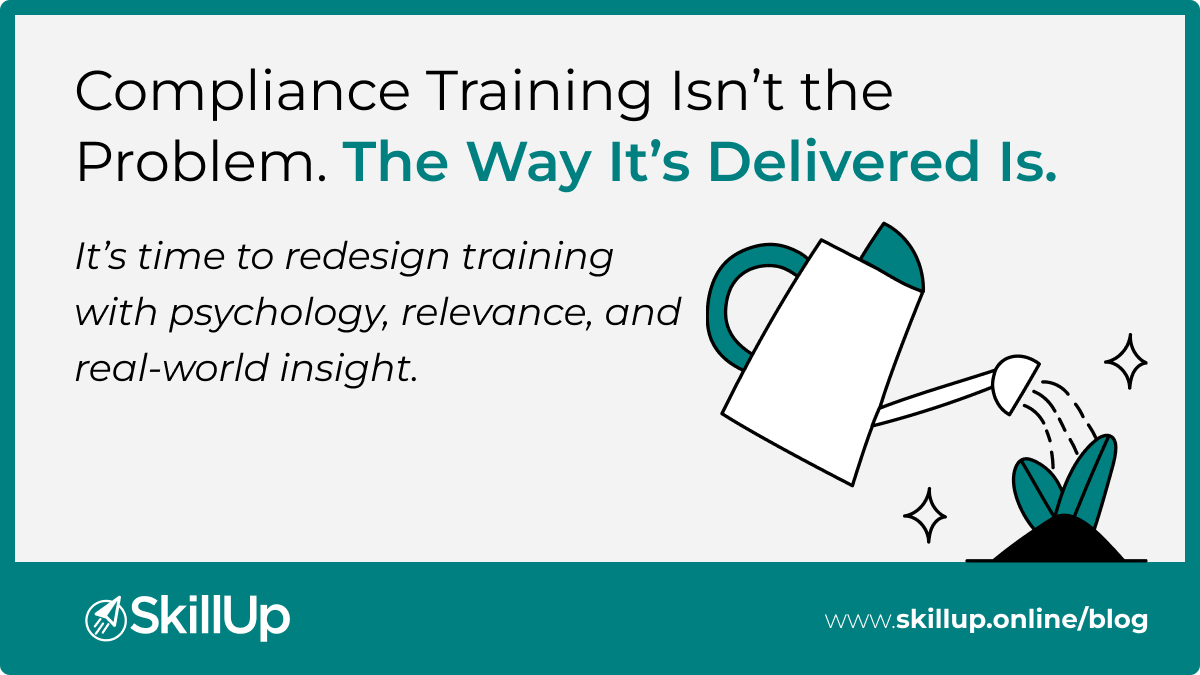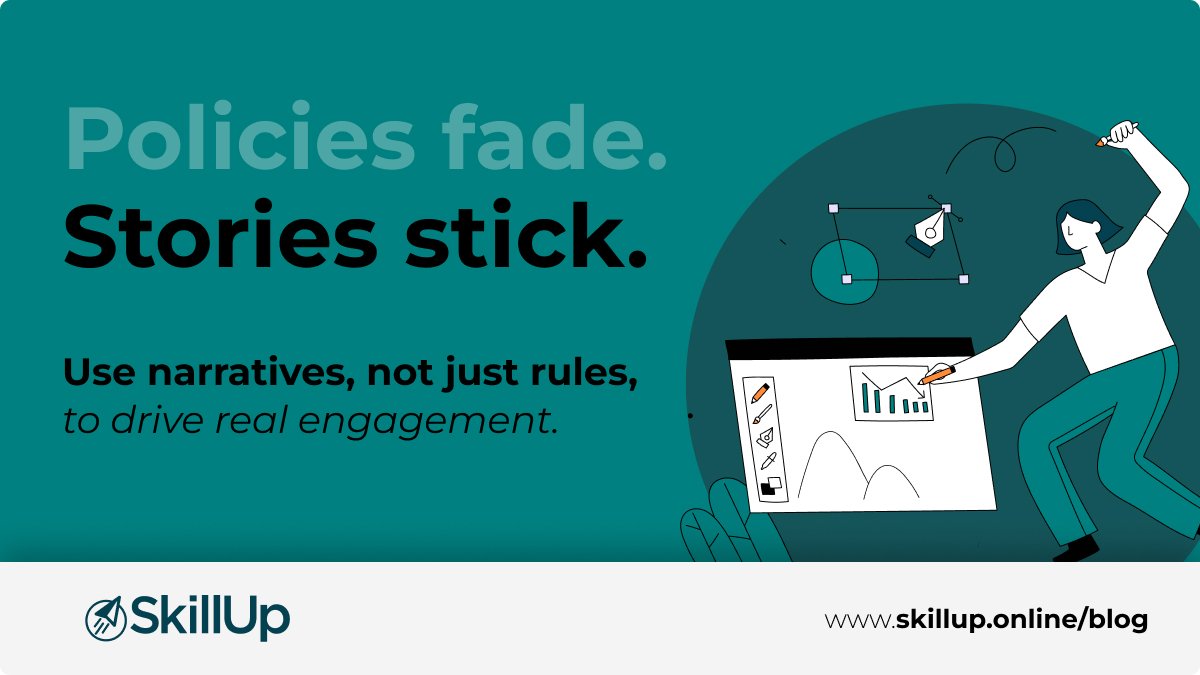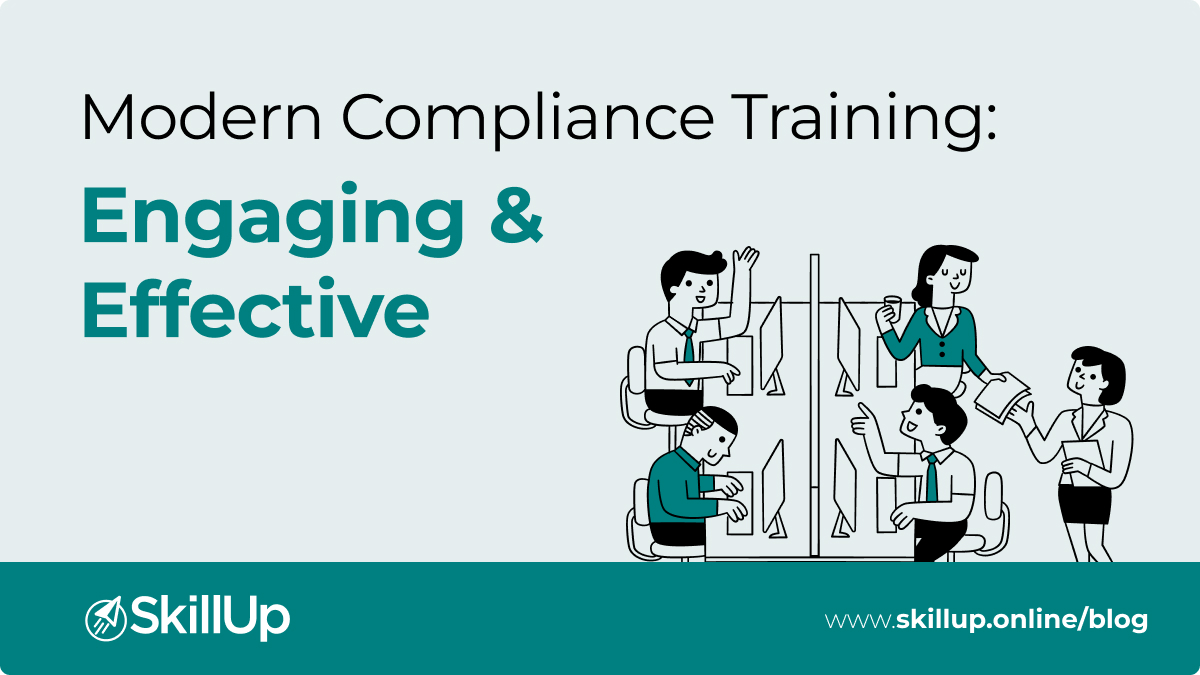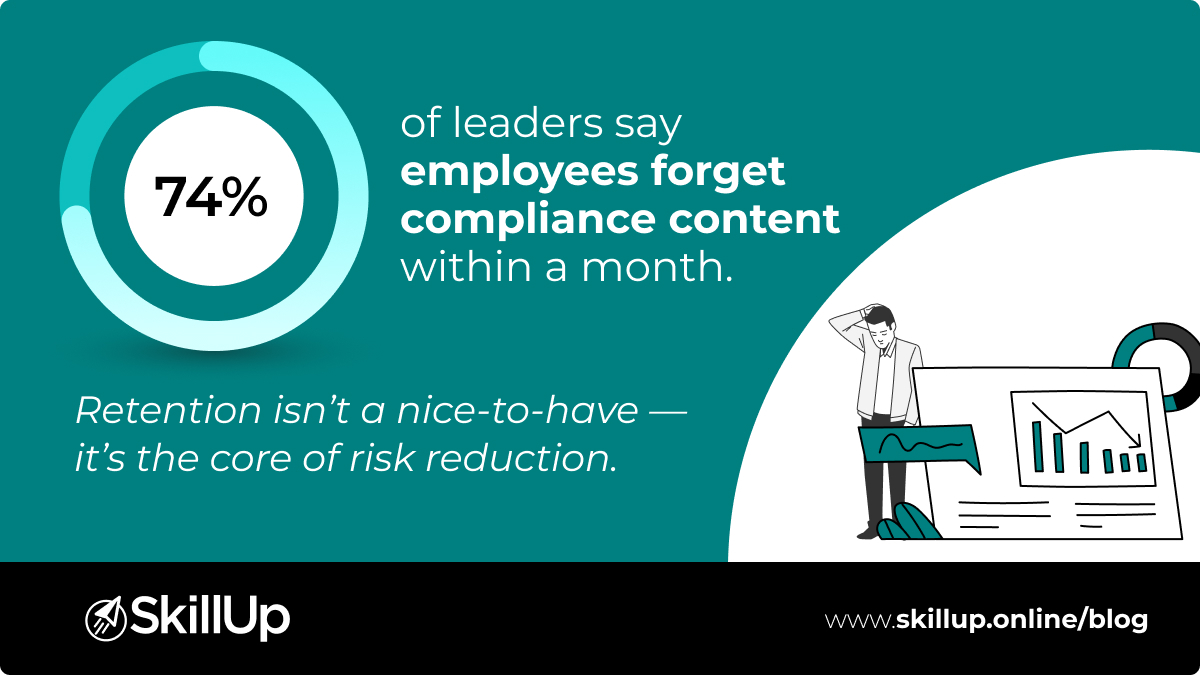Let’s face it. Compliance training rarely tops anyone’s list of favorite workplace activities. For many employees, it feels like another mandatory box to check. Some even admit to letting the video play in the background while answering emails or grabbing a snack.
This isn’t a case of poor work ethic or lack of interest. There are deeper psychological reasons behind why employees skip training, and understanding them is key to improving employee behavior compliance across the board. In this post, we’ll explore what the research says, what we’ve seen in the field, and how organizations can make compliance more engaging and relevant.
When compliance becomes a routine task
Think of a situation where a company sends out an email about a mandatory data protection module. Employees open the link, skim through the slides, click “next” a few times, and pass the quiz. Done and dusted.
What’s happening here is compliance fatigue. When training is repetitive, generic, or disconnected from everyday work, it gets mentally filed under “low priority.” This is not negligence. It’s a natural response to content that doesn’t feel urgent or meaningful.
Behavioral science backs this up. Studies show that when people perceive a task as routine or low value, they engage with it at the lowest level required. A paper in the Journal of Business Ethics found that employees often disengage from training they perceive as bureaucratic or symbolic. They are not rejecting the importance of ethics or safety. They are reacting to how the message is delivered.
When people think the rules don’t apply to them
During a client engagement at a tech startup, we spoke with several team members who had skipped recent compliance modules. One engineer told us he did not think he needed anti-bribery training because he never dealt with vendors. A designer said data privacy was not her concern because “that’s more of a legal thing.”
This is a classic case of compliance psychology. People assess relevance before they engage. If they do not see themselves reflected in the training content, they mentally opt out. This behavior is often unconscious and driven by cognitive dissonance. People avoid messages that challenge how they see themselves or their roles.
The result is selective disengagement. Even employees who care about doing the right thing may skip training if they believe the risks or responsibilities don’t apply to them.
Why stories stick and slides don’t
If you ask someone what they remember from their last compliance session, chances are they’ll struggle. Now ask them if they remember a story or real-life example from any training they’ve taken. Most will recall at least one.
The brain is wired for storytelling. Narratives activate emotional centers, making information more memorable. Yet too many compliance modules rely on static slides, robotic narration, and lists of rules. This approach ignores how people actually learn.
Now imagine this scenario. A regional manager in South America is terminated after accepting hospitality gifts from a supplier. The supplier meant no harm, and the manager thought it was normal business practice. But the internal audit flagged it, and the investigation revealed more.
That’s not just a policy reminder. It’s a story. It sparks curiosity, empathy, and reflection. And it sticks much longer than a PowerPoint slide ever could.
When no one else seems to care
At a recent compliance rollout for a manufacturing client, we noticed a trend. Teams with active managers completed their training quickly. Teams with disengaged leaders fell behind. When we asked junior staff why, one response stood out. “Honestly, if our team lead doesn’t even mention it, it feels like it can wait.”
This behavior falls under the concept of social modeling. People watch what others around them do. If their managers treat compliance training as a formality, they follow suit. If leaders treat it as important, employees do too.
Research by Treviño and Weaver shows that ethical leadership influences employee behavior more than rules or penalties. Compliance culture starts at the top. When leaders lead by example, employees are more likely to engage meaningfully with training.
When training gets drowned out by daily noise
Workplace demands are high. Emails pile up, meetings fill calendars, and everyone is chasing deadlines. In this kind of environment, compliance training often becomes background noise.
We worked with a logistics firm where employees said they postponed training simply because they were “too swamped.” This isn’t resistance. It’s a phenomenon known as tunneling. When people feel overwhelmed, they focus only on what seems urgent. Long-term risks or tasks without immediate payoff fall off the radar.
This is another reason employees skip training. It’s not always about lack of care. Often, it’s about timing and bandwidth.
What actually works in the real world
So what can organizations do to improve employee behavior compliance and build a stronger culture? Here are a few strategies that work well in practice.
Make training role-specific
One-size-fits-all content rarely works. When people see how compliance issues affect their actual work, they engage more. A marketing firm we worked with created short case studies tailored to different departments. The legal team reviewed client confidentiality cases. The media team discussed advertising ethics. Participation improved significantly.
Use real examples and stories
Skip the jargon and use real scenarios. Even anonymized incidents from your own company or industry can be powerful. People are more likely to reflect on consequences when they see real decisions and outcomes.
Break it into smaller parts
Instead of a long annual course, deliver short monthly lessons or scenarios. A healthcare client integrated five-minute compliance tips into its weekly team huddles. These bite-sized interactions built long-term awareness far better than their old 90-minute module.
Reinforce it through culture
Training is only one piece. Culture is what happens between training sessions. Recognize teams that demonstrate ethical decision-making. Ask leaders to reference compliance topics in regular meetings. Celebrate small wins when people speak up or ask questions. These actions signal that compliance is not a checkbox—it’s part of how the organization works.
Your Next Steps
The question is not whether employees care about doing the right thing. Most do. The challenge is designing compliance efforts that reflect how people actually think and behave.
When compliance psychology is taken into account, training becomes more than a formality. It becomes a tool for building trust, alignment, and responsibility across the organization.
Next time you hear someone ask why employees don’t take compliance seriously, remember the answer is not about motivation. It’s about design, relevance, and leadership.
Ready to update the compliance training of your organization? Connect with our team at [email protected] for a walkthrough of SkillUp’s modern solutions. We’ll show you how to turn compliance from a checkbox into a competitive advantage.

Compliance Training Expert
SkillUp







